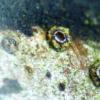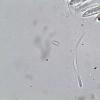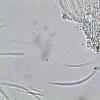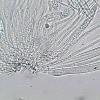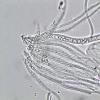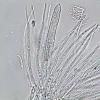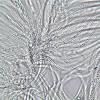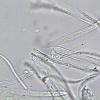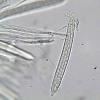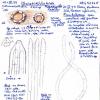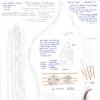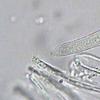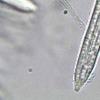
21-12-2025 09:32
Hello.A tiny ascomycete found embedded in wood in

21-12-2025 21:32
Pol DebaenstHello, Garden, Burgweg 19, Veurne, BelgiumOn 10/1

22-12-2025 23:38
Patrice TANCHAUDBonsoir, récolte sur un mur en pierre, apothéci

22-12-2025 00:47
Patrice TANCHAUDBonsoir, récolte à proximité du milieu dunaire

21-12-2025 21:40
Isabelle CharissouBonjour, j'aimerais connaitre les références de

20-12-2025 23:08
Patrice TANCHAUDBonsoir, récolte sur sol sablonneux dans l'arri�
Stictis
Blasco Rafael,
16-11-2015 08:11
 Hola, tengo esta Stictis sobre conos de Pinus, lo mas parecido que veo es Stictis elegans, que les parece?????.
Hola, tengo esta Stictis sobre conos de Pinus, lo mas parecido que veo es Stictis elegans, que les parece?????.sobre las Piñas de Pinus.
Diametro exterior 0,45.
Diametro central 0,26.
Parafisis septadas x2,5--x3, terminando en punta.
Ascas 90--105 x 9--10,
Crozier ¿? J+
Esporas 6 septos, 55--61 x 2,8--3.
Un saludo
Rafael
Hans-Otto Baral,
16-11-2015 09:48

Re : Stictis
Hi Rafael
This is a Naemacyclus, and not surely different from N. fimbriatus which has partly longer spore with 7 septa and a lobed margin, also inamyloid asci.
Could you please show more images in IKI which better show the amyloid apex?
The structure of the margin in section should also be compared, see my drawing.
Do the apos close on drying?
N. fimbriatus occurs on both needles and cones of Pinus.
Zotto
This is a Naemacyclus, and not surely different from N. fimbriatus which has partly longer spore with 7 septa and a lobed margin, also inamyloid asci.
Could you please show more images in IKI which better show the amyloid apex?
The structure of the margin in section should also be compared, see my drawing.
Do the apos close on drying?
N. fimbriatus occurs on both needles and cones of Pinus.
Zotto
Blasco Rafael,
16-11-2015 12:53
Hans-Otto Baral,
16-11-2015 13:09

Re : Stictis
Perhaps ty with KOh pefore.
N. fimbriatus has a plasmatic lens-shaped structure in the apex that may be mistaken as apical ring but is inamyloid and disappears in KOH
N. fimbriatus has a plasmatic lens-shaped structure in the apex that may be mistaken as apical ring but is inamyloid and disappears in KOH
